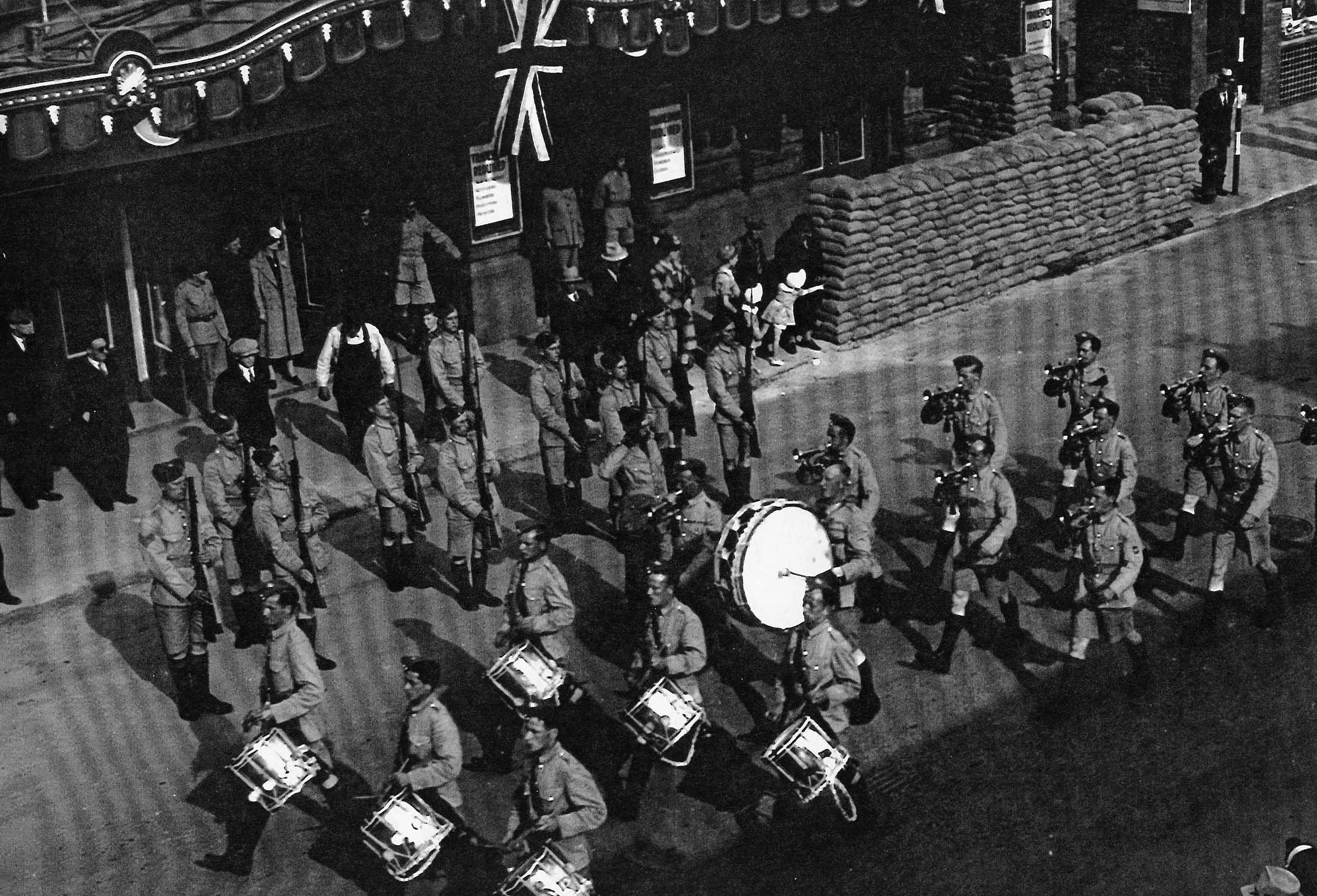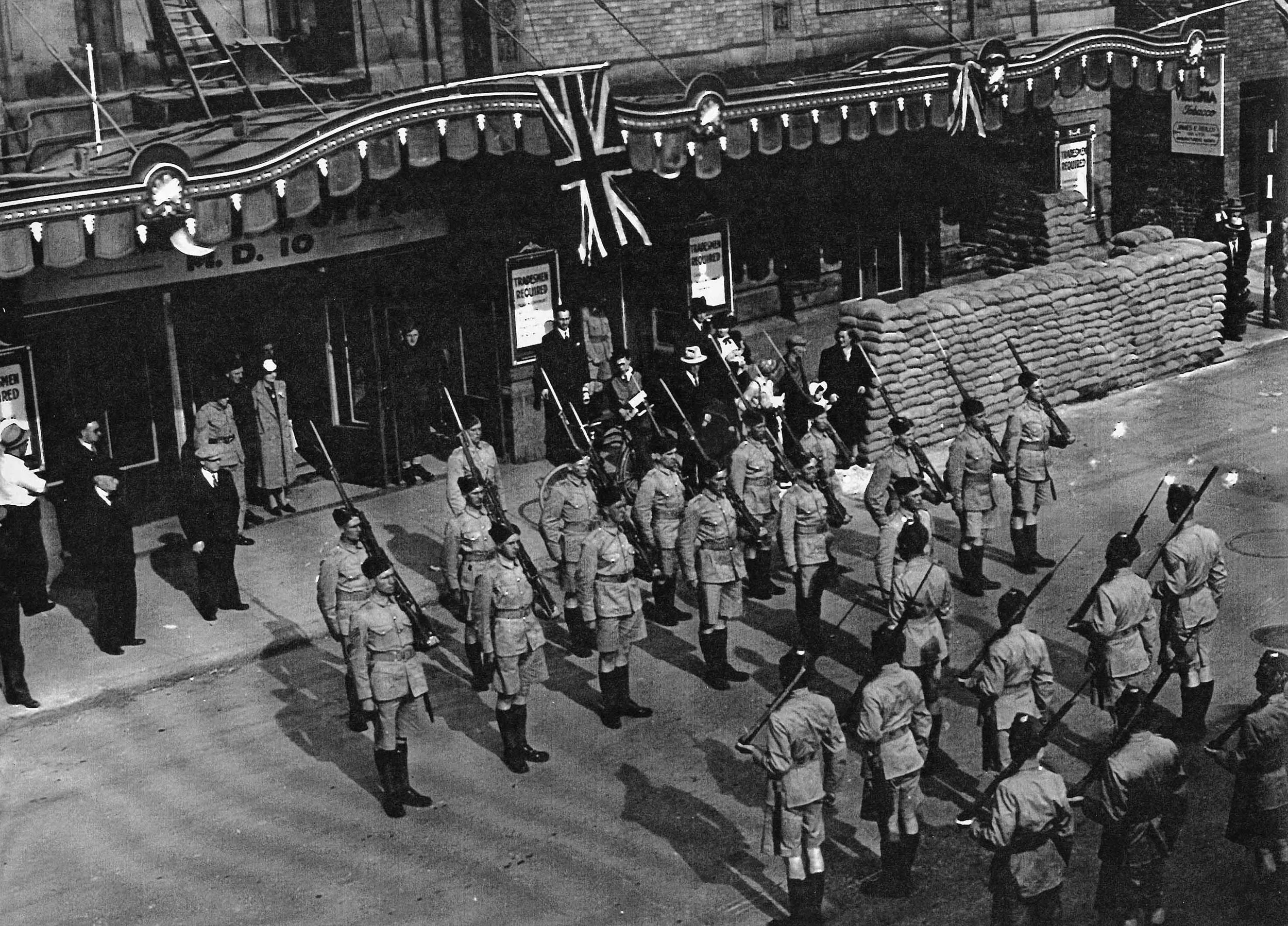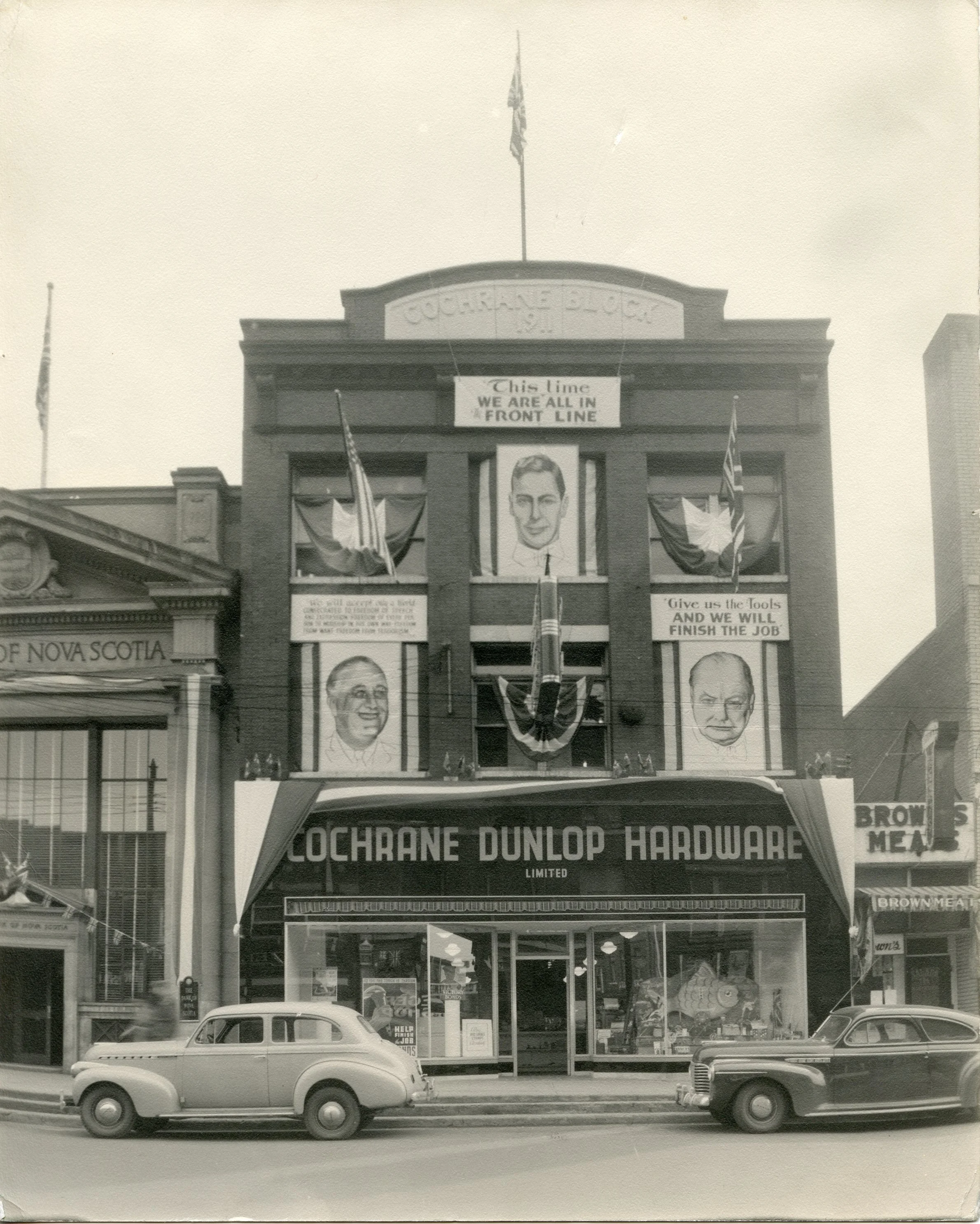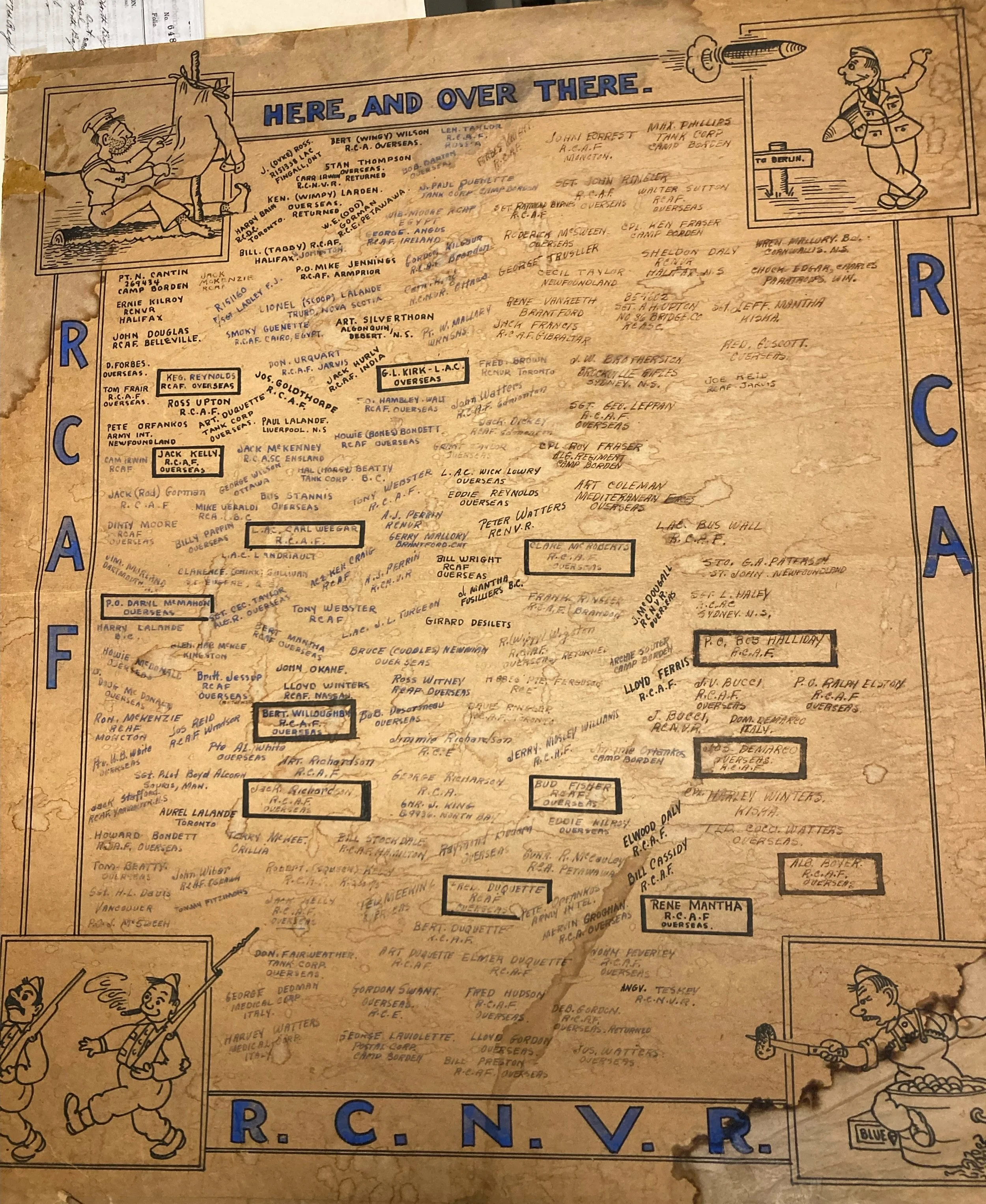Fighting Fascism
NORTH BAY AND THE SECOND WORLD WAR
Algonquin Regiment parade down Klock (Algonquin) Avenue, North Bay, c.1941
North Bay Museum Collection
During the Second World War, The Algonquin Regiment’s local companies were called out on active service in 1940, and recruited in the city. Many North Bayites serving with the Regiment fought in Northwest Europe during the Victory Campaign. Many others volunteered and served in other Regiments and Corps of the Canadian army.
No. 22 Basic Educational Training Center was set up at the current location of Maj. Troy Armouries and Chippewa Secondary School. It was responsible for teaching basic literacy and military training to recruits before they went on to further training and overseas deployments.
Soldiers on parade, Main St, North Bay, c.1941
North Bay Museum Collection
North Bay, as a geographic crossroads, became a strategic military site, with the construction of the North Bay Air Base and the Canadian Forces Station.
The City of North Bay sponsored the building of a Royal Canadian Navy corvette. The HMCS North Bay served in the Atlantic, protecting shipping and searching for German U-Boats.
Patriotic Display at Cochrane Dunlop Hardware c.1940
Like many other communities, North Bay engaged in a wide range of patriotic displays during the Second World War.
North Bay Museum Collection
In the City, local businesses and enterprises manufactured a wide variety of goods and materials for the war effort. War drives for scrap metals, fats, old clothing and other materials were conducted. City residents contributed to financing the war effort by purchasing War Bonds. And, as a strategic and logistical center, the railways radiating from North Bay moved personnel and goods of war to their destinations.
Merry Garden Tea Room Poster
During the 1930s and 1940s, the Merry Garden Tea Room was located on Main Street just west of Fisher Street. With the outbreak of the Second World War, an unknown artist began printing the names of the “regulars” who would meet to drink fountain pops and listen to the jukebox.
After the original artist enlisted, the printing of another unknown artist continued to maintain the record. As the war continued, some of the names were framed in black to show that they had been killed in action.
After the war, Mr. Veraldi removed the sign from the wall and presented it to W.E. “Odd” Gorman R.C.E. who had just returned from overseas.
North Bay Museum Collection
Did You Know…
The Craig Bit Company, which was located near the North Bay waterfront, specialized in shaping hardened metals. From 1943 to 1944, the company produced tungsten carbide caps for armour-piercing artillery shells.
The Purdy Mica Mine, located near North Bay, supplied high-quality muscovite mica, which was used as an electrical insulator in armoured vehicles, aircraft, and battleships.
Parade down Main Street c.1940
North Bay Museum Collection
Remember When…
Ernie Etches joined the militia in May 1940 at age 18. He recalls Major Troy lining the men up at the armouries on Oak Street and asking for volunteers. Eighteen men stepped forward for active service under Col. Jim Stewart. They received training in North Bay, Camp Borden, Thunder Bay, Camp Shilo, Niagara on the Lake, Newfoundland, and Nova Scotia before moving overseas in 1943.
Ernie Etches
Algonquin Regiment veteran
In July 1944, the Algonquin Regiment landed in France commanded by Lt. Col Hayes… “It was very organized when they landed on the beaches of Normandy. There were no injuries despite land mines all around. The Brigade took a bad beating at Hill 195, just outside of Caen. They lost quite a few men. It was hard to lose a buddy, but you couldn’t dwell on it.”
Doug McDonald
Algonquin Regiment veteran, North Bay Sports Hall of Fame member
Summary of excerpts from the North Bay Nugget 06-02-1992 “The Algonquin Regiment”






